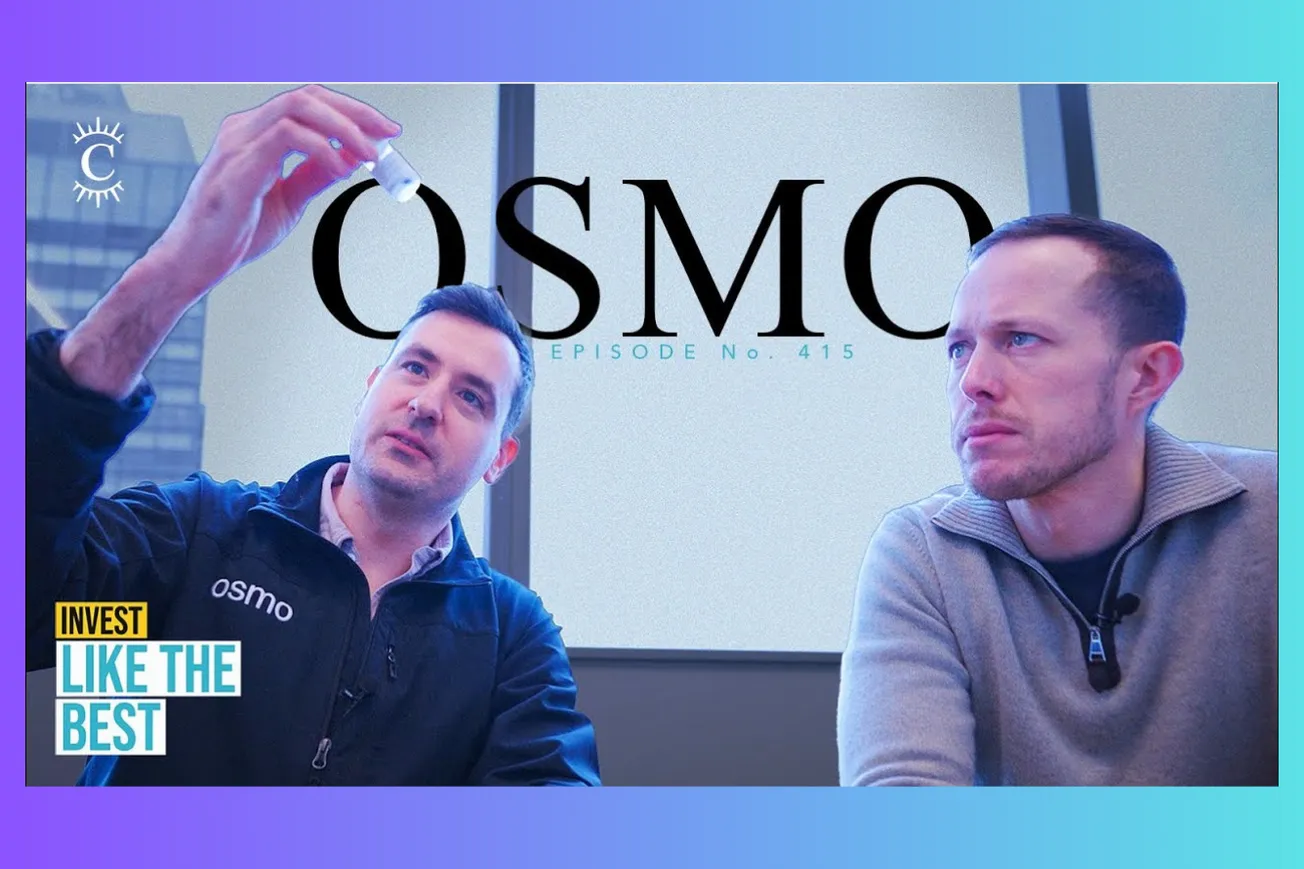Table of Contents
Osmo isn't just building an AI startup—it's giving machines the power to smell. In this deep dive into olfactory intelligence, Osmo's founder explains how digitizing scent is opening up entirely new frontiers—from personalized fragrances and healthcare diagnostics to counterfeiting detection and AI-designed molecules.
Key Takeaways
- Osmo is pioneering the digitization of scent using AI, chemistry, and high-fidelity sensor networks.
- Their platform enables both reading and writing of smells—turning sensory data into structured, reproducible output.
- Generation, Osmo’s fragrance platform, empowers anyone to co-create custom scents in minutes, not months.
- The company is building a full-stack data pipeline to label, synthesize, and interpret smell, mirroring the evolution of vision and language in AI.
- Applications range from anti-counterfeit tools and wellness diagnostics to reimagining how brands use scent.
From Childhood Curiosity to Olfactory Breakthroughs
Osmo founder Alex Wiltschko’s fascination with scent began in middle school—not with science, but with perfume.
- Growing up in College Station, Texas, he started programming at age 8 and collecting fragrances by 12.
- He noticed how scent changed social perception: “Spray an invisible thing on yourself, and everyone treats you differently.”
- One scent—Bvlgari Black—unfolded in cinematic ‘acts,’ which showed him that smell could be emotional storytelling.
- He later studied neuroscience at Michigan, then Harvard, where he focused on olfactory brain processes.
A Scientific Blind Spot: Why Can’t Computers Smell?
While AI mastered vision and language, scent remained elusive.
- Molecules, unlike pixels or words, have no standard format—they’re 3D, chaotic, and chemically diverse.
- The breakthrough came with graph neural networks, which let AI model the complex geometry of molecules.
- At Google Brain, Wiltschko led a team that built models predicting a molecule’s smell from its shape.
- In blind trials, their software outperformed trained human panelists—a milestone they likened to passing the ‘odor Turing test.’
The Tech Stack: From GCMS to Scent Printers
To digitize smell, Osmo had to build tools that read, write, and validate scent.
- The lab uses a GCMS (Gas Chromatography-Mass Spectrometry) machine to deconstruct smells into individual molecules.
- Their Rolls-Royce machine can pull scent from any item—flowers, shoes, fruits—by absorbing it onto film.
- A robotic autoloader and olfactometer lets them pause and analyze scent molecule-by-molecule.
- On the writing side, they’ve built a “scent printer,” which mixes primary odors in precise ratios to recreate complex smells.
- Feedback is human-centered: users smell both original and synthetic versions and judge whether they match.
Building a Synthetic Nose: Olfactory Intelligence (OI)
Osmo’s AI doesn’t just replicate smells. It generates entirely new ones.
- Their sensory panel mimics Scale AI for smell—humans label fragrance data multiple times per day.
- All AI-designed molecules are logged and linked to digital twins and physical samples in their molecular library.
- The platform allows active learning: AI creates new smells, gets them evaluated, and learns from each cycle.
- Fragrance mapping isn’t 3D—it’s 300D. Osmo embeds scent profiles into a massive vector space built on AI understanding.
Generation: Revolutionizing Fragrance Creation
Osmo's consumer-facing product, Generation, is a fragrance design platform democratizing scent creation.
- Traditionally, it takes 12–18 months to develop a fragrance via briefs and back-and-forth samples.
- Generation collapses this into minutes using AI and synthetic chemistry.
- Creators simply describe a scent experience, set benchmarks (e.g., “like Obsession by CK but crisper”), and get prototypes instantly.
- For example, a creator described the mission of inspiring people to pursue their life’s work. Osmo generated a foresty, fresh scent in real time.
Commercial Impacts: Smell as Brand, Identity, Utility
Osmo is betting that every brand, space, and product will soon have its own scent.
- 90% of consumer goods already use fragrances—from soaps to cars to hotel lobbies.
- Scents like Ritz-Carlton’s lobby aroma create lasting emotional ties through scent memory.
- Generation opens up custom scent creation to influencers, designers, and businesses that previously couldn’t access these tools.
- Speed and safety are engineered into the platform—compliance, molecular safety, and reproducibility are handled automatically.
Detecting Reality: Counterfeits, Health, and Truth
Beyond creation, Osmo’s reading tech is proving valuable in detection.
- StockX uses Osmo’s devices to detect counterfeit shoes based on scent signatures.
- Their reader identifies fakes by analyzing box smells in 20 seconds using AI.
- They envision healthcare applications—detecting illnesses through breath, sweat, or skin scent long before symptoms.
- By perfecting fruit and flower scent reproduction, they gain transfer power to human olfaction.
The Road Ahead: Digitizing a Human Sense
Osmo is building the first full-stack olfactory platform—hardware, software, chemistry, and AI.
- Their approach mimics how vision AI evolved: start with data labeling, build predictive models, add synthesis.
- The company balances long-term R&D (digitizing smell at scale) with near-term business (fragrance via Generation).
- Their vision: portable, affordable, high-fidelity scent devices embedded in everyday life.
- The mission: digitize smell as fully as vision and language, unlocking new AI capabilities and human experiences.
Osmo has already proven that computers can smell. Now they’re racing to make it useful—to give people and machines a shared sensory language. From AI-generated fragrances to health diagnostics and anti-fraud, the nose of the future is synthetic, intelligent, and increasingly indispensable.





